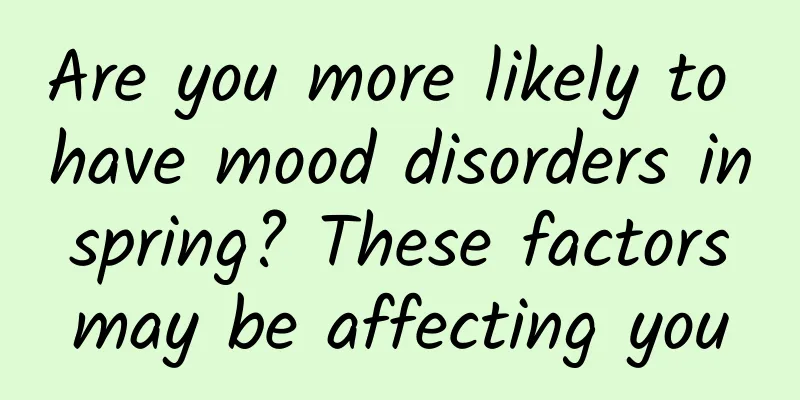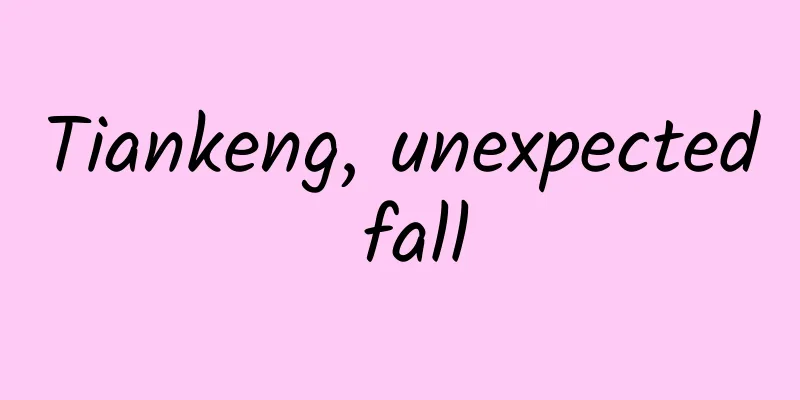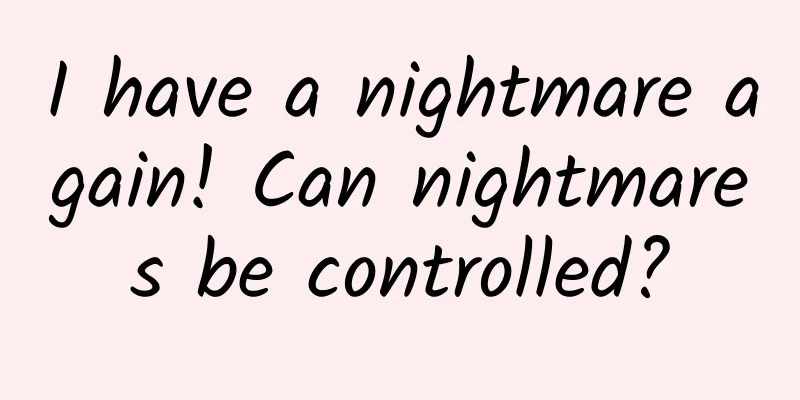Are you more likely to have mood disorders in spring? These factors may be affecting you

|
On a spring day when the weather is still cold and the cherry blossoms are dotted on the branches, some people fall into inexplicable anxiety and depression. This phenomenon, known as "spring mood disorder", shows a significant seasonal pattern in the statistics of outpatient visits to the Department of Psychiatry. Data from a Beijing hospital showed that the number of first-time depression diagnoses from March to May each year increased by 37% compared to winter, and the suicide rate also peaked in spring. This counterintuitive seasonal psychological fluctuation is actually a complex systemic reaction involving multiple factors. 1. Spring Oscillation of Biological Rhythms Experts from Changde Second People's Hospital said that the human body clock is extremely sensitive to changes in light. In spring, the daylight hours increase by about 2 minutes and 30 seconds per day. This seemingly mild change is enough to disrupt the rhythm of melatonin secretion. The pineal gland reduces melatonin production under light stimulation, leading to abnormal activity of serotonin transporters. Japanese scholars have found that the binding capacity of serotonin transporters decreases by 19% in spring, which directly affects the ability to regulate emotions. Seasonal adaptation of the autonomic nervous system also faces challenges. When the ambient temperature fluctuates by more than 12°C within 7 days, the stress response threshold of the hypothalamus-pituitary-adrenal axis (HPA axis) decreases by 40%. This "temperature roller coaster" causes frequent fluctuations in cortisol levels, causing the emotional regulation system to be in a state of constant stress. 2. Hidden Attacks from Climate Factors The air pressure fluctuations brought about by the spring atmospheric circulation can be called an "invisible killer". When the air pressure changes by more than 10hPa within 24 hours, the vestibular system in the inner ear will generate a false balance signal, triggering excessive release of the anxiety transmitter glutamate. German meteorological medicine research shows that the incidence of panic attacks increases three times under such weather conditions. Allergic reactions are associated with mood disorders at the molecular level. Allergens such as pollen stimulate mast cells to release histamine while also prompting microglia to secrete IL-6 inflammatory factors. This dual effect not only causes physical symptoms, but also reduces the density of dopamine D2 receptors in the prefrontal cortex, directly affecting decision-making and emotional control abilities. 3. Social Psychological Resonance Effect The social clock suddenly accelerates in the spring. Career planning and academic pressure after the Spring Festival form a compound stressor, and the abnormal rate of cortisol awakening response (CAR) can reach 2.3 times that of normal days. This continuous stress state leads to a decrease in the rate of hippocampal neurogenesis and weakens psychological resilience. The psychological energy consumption brought about by social restart is often underestimated. The sudden transition from the low-energy state of winter social interaction to frequent interpersonal interaction increases the oxygen consumption of the prefrontal cortex by 22%. When the social density exceeds the individual's tolerance threshold, the overload of the mirror neuron system may induce social burnout syndrome. Although mood swings are common in spring, they are not uncontrollable. From physiological rhythms to psychological adjustments to environmental interventions, systematic strategies can effectively alleviate symptoms. The following scientific suggestions are provided from several dimensions to help you smoothly get through the "emotionally sensitive season". 1. Reconstruction of physiological rhythms: Synchronization with nature 1. Morning light therapy How to do it: Get exposed to natural light for 30 minutes every morning from 7 to 9 am (also effective on cloudy days), and you can do it while taking a walk. Principle: Morning light with a color temperature of 5500K can activate retinal ipRGC cells, reset the biological clock, and optimize the serotonin/melatonin secretion ratio by 42%. 2. Step-by-step adjustment of work and rest schedule Method: Go to bed 15 minutes earlier each week, with the goal of falling asleep before 22:30 in the spring. Enhanced efficacy: Wearing blue light filtering glasses one hour before bedtime can reduce the duration of sleep latency by 50%. 3. Temperature adaptation training Strategy: After showering with 20℃ warm water, switch to 16℃ cold water for 30 seconds, once a day. Function: Stimulates the skin's cold receptor TRPM8, increases vagus nerve tone, and enhances tolerance to temperature fluctuations. 2. Environmental optimization: creating a pressure-resistant barrier 1. Air pressure fluctuation buffer method Home plan: Using a white noise device (frequency 200-800Hz) on days when the air pressure drops suddenly can reduce the excitability of the vestibular nucleus. Countermeasures when going out: Chew sugar-free gum and balance the middle ear pressure through temporomandibular joint exercises to reduce dizziness. 2. Micro-environment color temperature adjustment Tips: Adjust the work area lighting to 4000K neutral white light to reduce the beta wave load of the visual cortex and relieve visual anxiety. 3. Psychological resilience training: building emotional immunity 1. Pressure inoculation therapy Practice: Spend 10 minutes every day imagining situations that may cause anxiety (such as social situations), combined with abdominal breathing (inhale for 4 seconds - hold your breath for 4 seconds - exhale for 6 seconds). Mechanism: Enhance the inhibitory effect of the prefrontal cortex on the amygdala through controlled exposure. 2. Social Energy Budget Plan: Adopt the "3-2-1 rule" - 3 shallow social interactions (such as text message greetings), 2 medium interactions (1-hour gatherings), and 1 deep communication per week to avoid excessive consumption of psychological resources. 3. Cognitive defusion exercises Method: When negative thoughts appear, describing them in the third person (such as "Xiao Ming noticed that he was worried") can reduce emotional immersion by 35%. 4. When is professional intervention needed? If the following symptoms occur for more than 2 weeks, it is recommended to seek psychological or psychiatric help: 1. Functional impairment: Work efficiency decreases by more than 40%, and basic social interactions are avoided. 2. Physical symptoms: unexplained headache/stomach pain, etc., occurring ≥ 3 times/week. 3. Sleep disorders: sleep latency > 30 minutes or early awakening (more than 2 hours earlier than usual). The emotional fluctuations of spring are like a "climate adaptation exercise" for the body. Scientific adjustment strategies can transform them into opportunities for the growth of psychological resilience. Remember, true emotional health is not about being always calm, but about learning to be flexible in the midst of fluctuations. When the spring breeze blows on our faces, may we feel the joy of flowers blooming while also calming the waves in our hearts. Hunan Medical Chat Special Author: He Yi, Psychological Clinic, Changde Second People's Hospital Follow @湖南医聊 to get more health science information! (Edited by YT) |
>>: Which cooking oil reduces the risk of cancer? Harvard's latest research reveals
Recommend
66 old black-and-white movies before liberation (1941-1949)
From black and white to color, from film to digit...
How could this slippery, elusive slime be so important to science?
Leviathan Press: In The Matrix, when the protagon...
Do you understand App promotion thinking?
A friend asked me yesterday: How long do you thin...
Looking at the decline of Japan's television industry, can China become the next South Korea?
China has always had an awkward position in the g...
A guide to setting up a GuangDianTong information flow account!
How to choose from so many slots? How can we achi...
Are you really not fat? Is it possible that you are an "invisible fat person"?
Statement: This article is a medical-related educ...
Fighting Microsoft and Sony? The Magic Egg Console has become the cloud video chain in the domestic gaming industry
Although Microsoft Xbox One and Sony PS4 have bee...
Countly 15.3 beta released, mobile app statistics analysis
Countly 15.3 beta is released. This version has t...
Will the emperor penguin on the "ice floe" be the next to "disappear"?
On the subantarctic islands, there is a kind of p...
My investment philosophy is based on cyclicality.
The clock theory divides the economic cycle into ...
Taobao automatic delivery project, make money online 24 hours a day, 1,000 orders a day
Taobao automatic delivery project, make money onl...
Family members, helmets really can save lives! It’s not just talk!
When driving on the road, safety is the most impo...
Why would a cat be sealed if its neck was pinched?
Ding ding ding ~ Fantastic beasts are coming!...
Fan support: a way to commercialize entertainment products
In the early stages of an Internet product’s laun...
How should educational companies acquire customers on Kuaishou?
2019 was a "winter period" for the educ...









